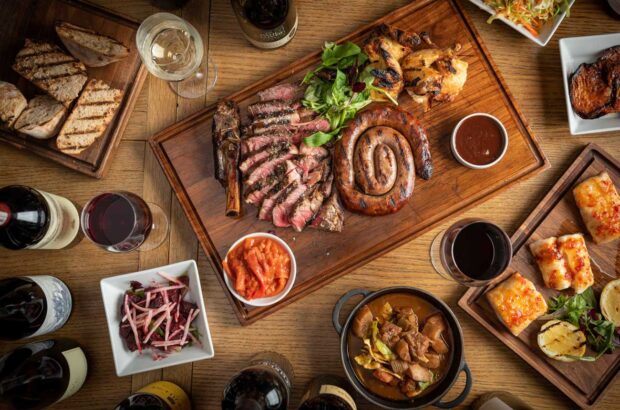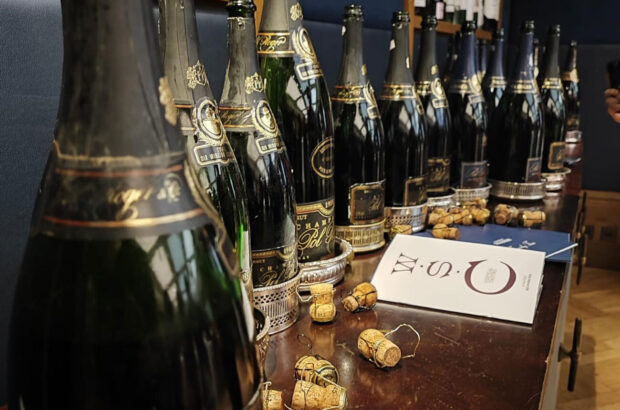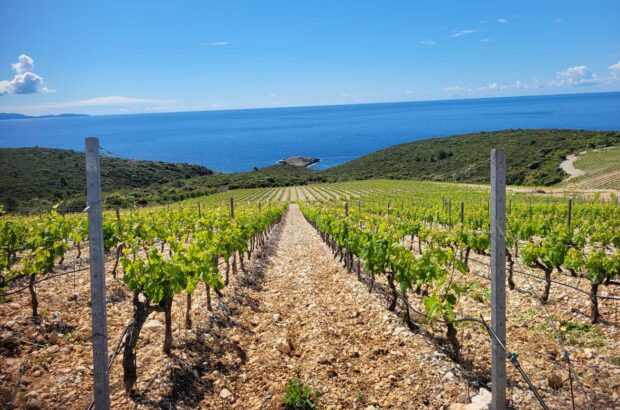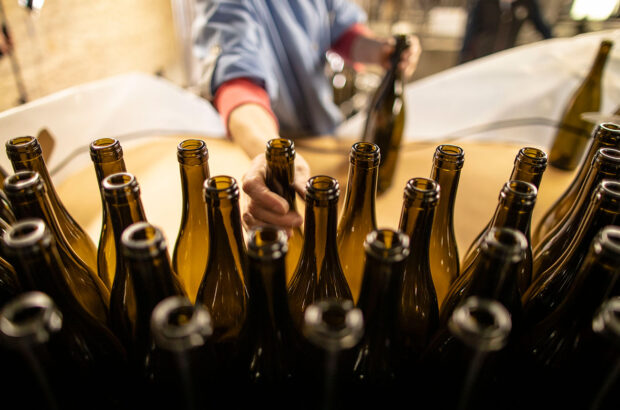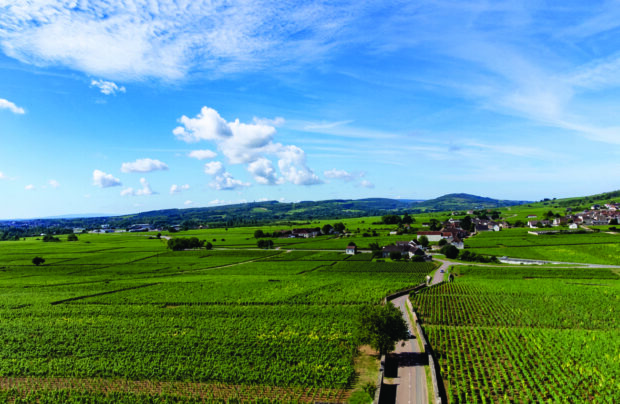Herzegovina, the smaller, southern part of Bosnia and Herzegovina, has at least 2,000 years of viticultural history, but it has really blossomed during the last 20. More than 30 modern wineries dot this sun-drenched strip abutting Croatia. Alongside these contemporary vineyards, the majority of families in this region of roughly 350,000 inhabitants make their own wine. Only-try-here bottles of humble yet hearty ‘vina’ are sold on the roadside next to wild honey and pomegranates. Bordeaux it isn’t.
DWWA results out 19 June!
Be the first to know: Subscribe to the DWWA newsletter
Wine-tasting in Herzegovina – a resolutely welcoming experience, where wine is often paired with pršut (local prosciutto) – revolves around two indigenous grapes. Blatina is a madcap red that erupts in the glass like a plum volcano. Yet it’s tricky to grow even here. Its flowers are auto-sterile, meaning they can’t fertilise themselves and the vines must be planted with another variety, though this still doesn’t guarantee fruit production, hence the variety’s nickname: ‘empty barrel’. The Austro-Hungarian emperors, who ruled Herzegovina from 1878 until World War I, preferred the zingy, mineral-rich white Žilavka. In the words of one of Herzegovina’s hottest young winemakers, Milena Anđelić: ‘Our guests didn’t fly thousands of miles to try Cab Sauv.’
Opened in 2007 and upgraded and re-launched in 2023, the Herzegovina Wine Route, which starts in the pretty regional capital of Mostar, reveals this burgeoning wine region to a wider audience. This year, 300 wine-friendly hotels, restaurants and experiences are expected to join the 30-odd wineries on an interactive route map, alongside canoeing, bike trails and historic towns in the hilly hinterland. Best of all, the route unites wine lovers of all faiths in a region once riven by difference. Visit now and you’ll be among the first to sip the latest generation of one-off wines.

Looking over Svitavsko lake on the Ćiro bike trail
Striking out from Mostar
Andrija Ćorić is vice president of the Herzegovina Wine Route. His great-grandfather Šimun soldiered for 12 years for the Austro-Hungarian Empire and was repaid with some sloping, stony land in the village of Paoča near Čitluk. Here the Andrija vineyard, named after Šimun’s son, was established, a 30-minute rollercoaster drive southwest from Mostar. In 2019, the historic winery was modernised, and it’s now a viticultural playground with a wine library, stroll-through cellars, tasting rooms, boutique guestrooms and a gourmet restaurant. ‘God gave us stones, sunshine and two grapes you won’t find anywhere else,’ says Ćorić.
During the socialist era, when families in the former Yugoslavia were limited to making 100 litres of wine a year for personal consumption, Andrija was given special dispensation to produce creamy Žilavka whites, with the honeysuckle subtlety of a wildflower meadow, for national leader Josip Tito. When war came to the Balkans in the 1990s, the Ćorić family didn’t miss a single vintage, despite a bomb falling on its vineyard. Wine and food tastings (€10-€40), conducted by generous hosts Andrija, his sister Katarina and loquacious patriarch Miro, are superb. Their Blatina Andrija Selection revs like a Formula 1 car then finishes like a slow cruise through an orchard of cherries.
Also southwest of Mostar is biodynamic pioneer Brkić. This bucolic vineyard produces a landmark organic Žilavka. Like most wineries in Herzegovina, a call or WhatsApp a few days in advance will allow host Josip and his three young sons to prepare a wine tasting with some homemade bread, pršut and two types of cheese (€25 per person), or arrange a local driver or activities. Visitors are welcome to help with the September harvests. Other wine-related activities and tours in Herzegovina are generally open from Easter until October.

The waterfall of Kravica. Credit: Federica Gentile / Getty Images
My perfect day in Herzegovina
Morning
Start on the rebuilt Ottoman-era bridge in Mostar, the symbol of the historic regional capital. Each August or September, the 16th-century bridge becomes a venue for the Red Bull Cliff Diving World Series, as divers leap more than 20m into the Neretva river flowing below. Mostar’s UNESCO World Heritage-listed old town area abutting the bridge is a warren of craft stores, weaving enterprises and cafés. Sample a Bosnian coffee, a foamy version of the drink introduced by the Ottoman Turks, who ruled Herzegovina for
more than 400 years. Overlooking the river is standout classic Restaurant Šadrvan (see ‘address book’, below), where a halal Balkan menu takes diners back centuries. Finish with a speedboat tour along the Neretva, passing under the Ottoman bridge.
Afternoon
The region’s most complete viticultural experience is Carski vineyard, a 20-minute taxi ride south of Mostar. It looks like a chic Napa estate. Wines to purchase or taste in the ultra-modern cellar rank among Herzegovina’s finest. The olive tree-strewn vineyards make for a wonderful stroll. Carski sits on the outskirts of adventure village Blagaj, home to rafting operators and a via ferrata climbing trail. It’s also the location of a gorgeous whirling dervish monastery, enchantingly located alongside a surging river.
Evening
Continue 30 minutes southeast through a series of wine-growing villages via the Catholic pilgrimage site of Međugorje. Near the awesome waterfall of Kravica is Nuić winery. Here, Žilavka and Blatina are grown alongside rare Croatian grapes, as well as a number of international varieties; a one-hour tour and tasting costs €12.50. Nearby, Etno Selo Herceg is a hotel complex of 50 stone villas featuring Slavonian oak furniture, together with a large swimming pool. The estate serves fine food and its own wines alongside those from top wineries, including Nuić and Brkić.
Towards Trebnije

The city of Trebinje is situated on the banks of the Trebišnjica river. Credit: CCR_358 / Getty Images
The Herzegovina Wine Route is criss-crossed by a unique cycling trail. Until 1976, a steam train, first operated by the Austro-Hungarian Empire, chuffed its way from Mostar, through the countryside and eventually to Dubrovnik. Today the Ćiro (as the train line was known) has been remade as a pastoral bike trail dotted with rural hotels serving burek pastries and trout plucked from the river. The 142km section that roughly follows the wine route runs from Mostar all the way to Trebinje, Herzegovina’s other major winemaking area. If driving, Mostar and Trebinje are two hours apart.
Trebinje is a majority ethnic Serb area of Herzegovina. It’s home to the visitor-friendly Tvrdoš monastery, where a religious order has made a flinty Žilavka since the 15th century. The head cellarman, behind such Decanter award-winning wines as the Velika Rezerva 2016 (DWWA Bronze in 2018), is a monk. Try the juxtaposition of tasting in the medieval cellar then making your way upstairs and gazing up at the adjoining monastery’s frescoed dome, a religious vision in cobalt and gold.
In Trebinje, a 10-minute drive from the monastery, one of the largest and most impressive wine operations in the area was created in a single generation by Radovan Vukoje. In 2000, aged 20, Vukoje harvested his first grapes at winery Vukoje 1982 while studying oenology in Belgrade. His wines can be tasted in the seven-storey cellar, fermentation room, restaurant and rooftop bar, which overlooks Trebinje. A favourite is the 2018 pure Vranac. Made with big, black liquorice-tang Vranac grapes, this wine tastes large and lasts long – imagine a Balkan amarone.
Vukoje’s latest project delivers history in a glass. In 2023, he purchased the last of 11 parcels of land that once made up the personal vineyard of Emperor Franz Joseph (who died in 1916). He now escorts guests there for summertime tastings, a 10-minute drive from Trebinje through fig orchards. Vukoje’s Carsko Vino – ‘csar’s wine’ – is predominantly Žilavka and as unctuous as a peach smoothie. ‘Now they drink it in Vienna again,’ smiles Vukoje.
On the road back to Trebinje, an absolute must-visit is Vinarija Anđelić. Run by mother-and-daughter team Milica and Milena, the winery is sited inside a rock cavern that the family hollowed out using construction dynamite in 2004. (Milena, now 24, used to rock climb around the cellar walls.) At their new tasting room (due to open in 2024), try the signature Žilavka, as fragrant and moreish as Turkish delight. Multilingual Milena also conducts al fresco tastings accompanied by local cheese and ham (€35-€40, bookings essential) in her family vineyards during summer.
Back near Mostar, Carski vineyard, so called because it supplied wines to Vienna’s Habsburg ‘csars’, and its adjoining Emporia Hotel is the ultimate wine address. It has a top chef and a slick tasting experience for a fraction of the price of France or Italy. Carski produces about 125,000 bottles of wine per year, which is large by local standards – Herzegovina’s entire production could be trumped by a single big Italian winery. And what wines they are, made by Josip Martinović, one of the region’s top oenologists, who also manages Herzegovina’s biggest online wine store, Hedonism, which stocks 2,000 lines of wine. Carski’s full-blooded Blatina, costing €7 at the vineyard, is like being fed wild strawberries by Habsburg Empress Sisi, who features on the label. It’s a taste of things to come.
Your Herzegovina address book
Accommodation

The Emporia Hotel at Carski vineyard
Hotel Emporia, near Mostar
Herzegovina’s ultimate wine address has a pool, funky rooms, gourmet restaurant and rows of Tuscan-style cypress trees.
Hotel Verso, Mostar
A hip new bargain, 10 minutes’ walk from the Ottoman bridge, with 10 contemporary rooms and a restaurant area that doubles as Mostar’s ladies-who-lunch address. A glass of wine costs €2.50; double rooms including breakfast from €69.
Kriva Cuprija, Mostar
A heritage hotel overlooking Mostar’s old town and Ottoman bridge. Local wines are served on the panoramic terrace. Double rooms including breakfast from €97.
Food & drink

Restaurant Šadrvan
Andrija winery, Čitluk
There is no menu at the new restaurant of Herzegovina’s most welcoming winery. Text or call in advance for a belly-busting platter of pork goulash and slow-cooked lamb. Pair with Travarica firewater, made using 28 herbs and distilled by owner-host Miro, then sleep it off in a wine-themed guest room upstairs.
Restaurant Šadrvan, Mostar
@restoran.sadrvan
A highly commended vintage charmer overlooking Mostar’s famous bridge. Šadrvan’s cuisine is a Balkan delight of ćevapi minced lamb fingers with hot pepper sauce, paired with the best baklava desserts this side of Istanbul. Follow with Bosnian coffee.
Romanca, near Mostar
A 10-minute drive south of Mostar, Romanca sits in its own vast vineyard. It offers cellar tours and tastings, and you can enjoy stuffed lamb and wine-steeped beef in the adjoining restaurant.
Things to do

Blagaj monastery, built by the whirling dervishes 500 years ago. Credit: Elena Duvernay / Getty Images
Blagaj monastery, near Mostar
A 25-minute taxi ride from Mostar, this astonishingly picturesque monastery was built by Sufi Islamic ‘whirling dervishes’ five centuries ago. The mystical location – where the Buna river oozes out from an eerie cave – adds to the peaceful allure.
Kayaking on Neretva river, Jablanica
A 40-minute drive from Mostar, outdoor-adventure specialists Visit Jablanica operate kayak glamping trips, hiking tours and, for €20, regular canoe rental on the translucent blue Neretva river.
Via Vino, Mostar
This wine store, tasting room and regional travel agency on Mostar’s bustling Feljića boulevard offers a €75 Herzegovina Wine Route tour that stops at three rural wineries, including Brkić.
How to get there

Credit: Maggie Nelson
Mostar is about two hours’ drive from three airports: Sarajevo, Dubrovnik and Split, the latter two in neighbouring Croatia. From Sarajevo, Bosnia’s capital city, a telegenic train (also two hours) runs alongside the Neretva river directly to Mostar.






